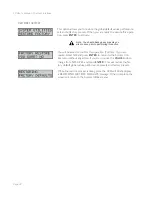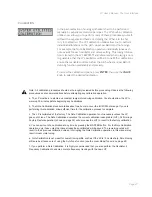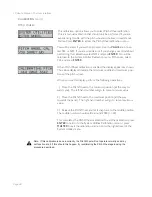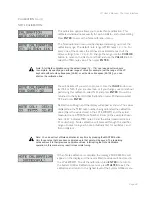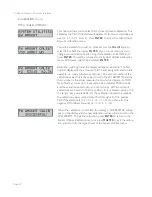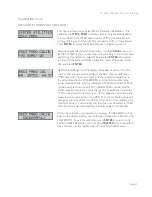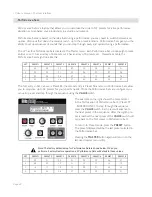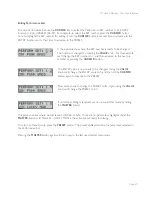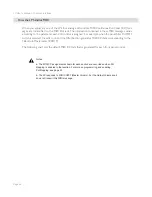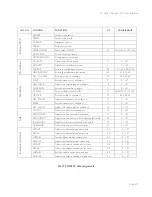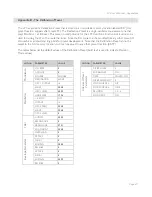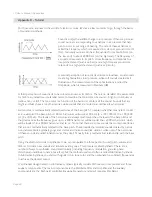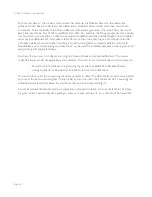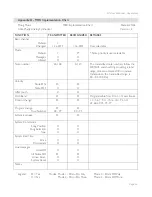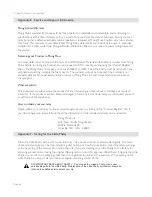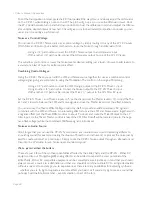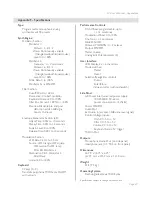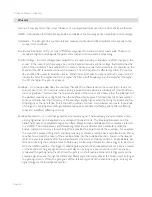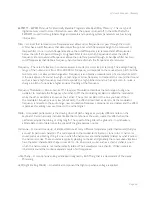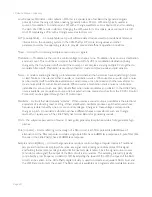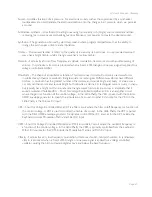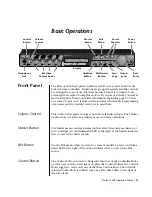
Page 50
LP User’s Manual - Appendices
Page 51
LP User’s Manual - Appendices
Like the square wave, the triangle wave only contains odd harmonics,
but the levels of the harmonics in a triangle wave are much less. The
triangle wave has a soft, slightly buzzy sound that is suitable for high-
pitched leads (like a fl ute) or adding a beefy sub-bass to bass sounds.
The sine wave is the purest waveform of them all. It has no harmonics,
so it produces a very pure tone. Because of this, sine waves generally
aren’t used as primary audio signals, but are often used to reinforce or
enhance other waves. They are also used as modulation sources.
Synthesizers often have more than one oscillator, and each oscillator usually has its own frequency and
waveform and level (volume) parameters. Several oscillators make possible rich and complex sound source
confi gurations. Some synthesizers also permit external audio signals to serve as sound sources, allowing you
to combine them with the oscillators, or process the external audio by itself using the synthesizer compo-
nents.
The combined sound sources are routed to the Filter, the circuit that removes frequencies. Although there
are several types of fi lters, the Little Phatty offers just one, but it’s a very important one: the Lowpass fi lter.
By defi nition, a Lowpass fi lter removes high frequencies while allow-
ing low frequencies to pass through. The frequency at which the fi lter
works to remove high frequency signals is called the Cutoff frequency.
Above the cutoff, frequencies are gradually reduced according to the
fi lter’s ‘slope’, which is a measure of how well the fi lter works. The
slope of a fi lter is expressed in decibels per octave (dB/Oct). The Little
Phatty fi lter is rated at 24 dB/Oct, which creates a dramatic reduction
in unwanted frequencies. This is a highly desirable quality for subtractive
synthesis.
Another important fi lter parameter is the fi lter resonance. Resonance amplifi es the frequencies at the
cutoff frequency, emphasizing any signal frequencies that appear there. It’s possible to adjust the resonance
control to the point where the fi lter actually oscillates. When this occurs, the oscillation frequency is the
same as the cutoff frequency.
The Filtered signal is routed to the Amplifi er, which controls the gain (volume) of the signal. The Amplifi er
controls the articulation of a sound, turning it on and off as you play. The Amplifi er is usually paired with
an Envelope Generator (described below). The gain of the amplifi er follows the contours of the Envelope
Generator signal, shaping the sound from start to fi nish.
The Oscillator, Filter and Amplifi er are voltage controlled, meaning that they respond to changes in voltages.
For the Oscillator, it means the higher the voltage, the higher the pitch. For the Filter, it means the higher the
voltage, the higher the cutoff frequency. For the Amplifi er, this means the higher the voltage, the greater the
volume. Since each of the three main components respond to a voltage, the entire synthesis system thus
has a common control element. This provides great fl exibility for sound programming, and allows auxiliary
components, like Envelope Generators and Low Frequency Oscillators (which generate control voltages) to
further vary the sound.

